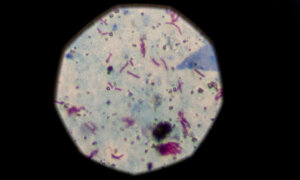Scientists have uncovered a new chemical compound lurking in U.S. drinking water, potentially exposing one in five Americans to an unidentified health risk.
Researchers at the University of Arkansas have identified chloronitramide anion, a previously unknown byproduct of water disinfection that could have implications for public health, according to a new study published on Nov. 21 in Science.
Toxicity Still Unknown
The newly identified compound, chloronitramide anion (chemically expressed as Cl–N–NO2
−), is an end product of inorganic chloramine decomposition. While its toxicity remains unknown, researchers are concerned about its prevalence and similarity to other toxic compounds. Further study is necessary to assess its public health risk, the researchers wrote.
Chloramines, chemical compounds containing chlorine and ammonia used to kill bacteria, viruses, and other organisms that can cause illness, have been used by water utilities since the 1930s. More than 20 percent of Americans consume drinking water treated with chloramines, according to the U.S. Environmental Protection Agency (EPA).
Challenges in Identification
While researchers have been aware of the compound for decades, its identification posed significant challenges, according to Julian Fairey, an associate professor of civil engineering at the University of Arkansas and first co-author of the paper detailing this discovery.
“It’s a very stable chemical with a low molecular weight,” Fairey said in a statement. “It’s a very difficult chemical to find. The hardest part was identifying it and proving it was the structure we were saying it was.”
The identification of chloronitramide anion involved synthesizing the compound in Fairey’s lab. Samples of the synthesized compound were then analyzed.
Potential Health Risks Yet to Be Investigated
As with any newly discovered compound, questions arise regarding the potential health risks associated with chloronitramide anion, as it has not yet been evaluated in toxicity studies.
The study authors emphasized that this newly discovered substance “is a potential human health concern and is therefore an immediate candidate for quantitation in source waters, finished drinking waters, and wastewater effluents.” They also wrote that these findings warrant an assessment of chloronitramide anion’s carcinogenicity and reproductive and developmental toxicities.
“It’s well recognized that when we disinfect drinking water, there is some toxicity that’s created,” Fairey, who studies the chemistry of drinking water disinfectants, said in the statement. “Chronic toxicity, really.”
Possible Link to Cancer
A certain percentage of people may develop cancer from drinking water over several decades, according to Fairey.
“But we haven’t identified what chemicals are driving that toxicity,” he said. “A major goal of our work is to identify these chemicals and the reaction pathways through which they form.”
Identifying chloronitramide anion is a step toward understanding these complex chemical processes. While it remains to be seen whether this compound will be linked to any cancers or other adverse health risks, future research by academics and regulatory agencies, including the EPA, will assess its implications.
“Even if it is not toxic, finding it can help us understand the pathways for how other compounds are formed, including toxins,” Fairey said. According to him, knowledge of a compound’s origins can lead to its control.














